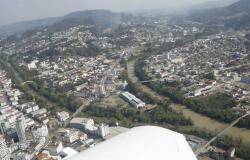Published 04/03/2024 00:00
Like many mothers in the West Zone, Sueli left her children at home to work in Barra. She left very early and returned late, bouncing on a hot, crowded bus through Serra da Grota Funda. I shared her joy when she started using the BRT in 2012. At the time working at CET-Rio, I was proud to participate in the implementation of Transoeste, Transcarioca and Transolímpica, milestones in the city’s mobility that improved the quality of life of so many people.
Years later, it was with great sadness and indignation that I also followed the degradation and slow agony of the BRT, which became a symbol of abandonment and jokes.
So, when Mayor Eduardo Paes asked me to be part of the city hall’s task force to rebuild the system, I didn’t hesitate to accept, as the public servant that I have always been. I heard from many that it would be an impossible mission to take over the management of the BRT and that such a failure would harm my CV. However, others, like Sueli, had faith that we would restore the BRT, and it was because of them that, every day, my certainty was renewed that we would be able to restore dignity to our passengers.
The scenario we found on March 23, 2021, the first day of the intervention, was devastating: of the fleet of 390 articulated vehicles that operated in 2016, only 120 remained circulating, overcrowded and in precarious conditions. In the garages, dozens of unusable buses, most of them unrecoverable. The warehouses were empty, with no stock of parts for bus maintenance. Of the 417,000 passengers per business day already transported, only 150,000 still used the BRT. Of the 120 stations, 46 were closed due to vandalism, several of them were set on fire. The Avenida Cesário de Melo corridor, which connects Santa Cruz to Campo Grande, had been deactivated since 2018, succumbing to depredation and neglect.
After the first measures, still in the intervention phase, we managed to increase the number of buses in operation, using rented vehicles to support demands during peak hours, while the city council tendered for a new fleet. One by one, all deactivated stations were renovated with new construction standards that curbed vandalism and returned to the system, such as those at Cesário de Melo, where buses began to circulate again in October 2021. Little by little, our passengers returned . There was, indeed, a future for the BRT, which began to become a reality when the new articulated vehicles, soon named by the locals as “amarelinhos”, began to parade at the Transolímpica, in December 2022, followed by the Transcarioca, in March 2023, and , finally, at Transoeste, last December.
After three challenging, intense, but incredible years, 515 “yellows” now transport 375 thousand passengers per day – 150% more compared to 2021 – with speed, safety and quality, traveling 150 km with their 120 stations and 10 terminals. With the full operation of Transbrasil, the implementation of the BRT network in the city will be consolidated, connecting the West Zone to the Center. Having the opportunity to dedicate myself to requalifying this system, making a difference in the lives of so many people, also requalified my life.
Claudia Secin
CEO of MOBI Rio






